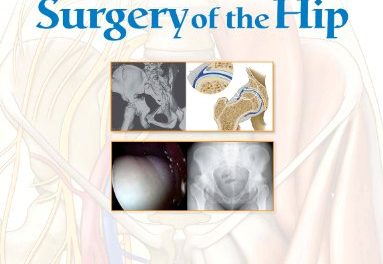Editor: Arvind Venkat, MD
Publisher: Wiley Blackwell -359 pages
Book Review by: Nano Khilnani
This book contains articles written by 20 contributors – all in the United States – who are specialists in various areas of medicine and surgery.
The editor, Arvind Venkat MD, is research director in the emergency department at Allegheny General Hospital in Pittsburgh. He is also an associate professor of emergency medicine at the Drexel University College of Medicine in Philadelphia.
Dr. Venkat has written the Introduction of this book and co-written three of the 16 chapters of this book. Those pertain to end-stage renal disease, cystic fibrosis, and the human immunodeficiency virus or HIV.
Each chapter starts with an Introduction and epidemiology (the sum of factors that control the incidence, presence or absence of a disease). The topic headings are then presented along pertinent discussions. The number of topics and length of discussions vary in each chapter depending on how much depth the authors choose to get into.
The chapter ends with a short conclusion and a reference list which is typically quite large. This resource is for the benefit of the reader to gain additional information and insight and more specialized knowledge. Some charts, tables and computer tomography (CT) scans are also presented in each chapter to aid in learning.
The 16 chapters cover quite a broad range of conditions, complications and diseases that patients are afflicted with which require emergency treatment and surgery to remedy the problems. The variety of cases is large. For example, it varies from patients that have congenital heart disease or have had a cardiac arrest to those who have had a kidney transplant or have life-threatening renal disease.
Other types of cases are patients afflicted with cystic fibrosis (including of the lungs which have scarred them so much a transplant of lungs would be imperative to avoid death), to sickle cell disease, which is the presence of abnormal red blood cells that are shaped like a sickle that leads to shortened lives.
Additional conditions covered in this book that require emergency treatment or surgery are obesity and the life-threatening risks of being severely overweight, and bariatric surgery that involves reducing the size of the stomach to help patients eat less. This procedure can substantially lower their weight, and prevents and patient them from regaining their pounds.
Chapters devoted to senior citizens in trauma and to children who have intestinal failure and complications from visceral (gut) transplant are also part of this book.
Older patients make their appearance in the emergency departments of medical centers more than their average-age counterparts. They are also more difficult to treat than others due to a large number of reasons: their blood circulation is slower, their strength is less because their muscle mass is smaller, and their postoperative recovery takes more time. These and other factors account for the fact that their mortality rates are higher than the average visitor to the ED.
Children who are afflicted with intestinal failure are for the most part those with what is called “short gut syndrome.” The incidence of this problem is from 3 to 25 per 100,000 births. When the intestine is critically shorter than the minimal length required to successfully digest food and absorb an adequate amount nutrients from it necessary for growth, the result is intestinal failure. This also means that life-sustaining chemicals such as electrolytes are denied to the patient, and death would be certain
This chapter discusses the remedies available for such “short gut” patients, which include different types of re-section surgery and feeding of nutrients to them through tubes, one of which is called total parenteral nutrition or TPN.
There are three other chapters in this book that cover issues other than the ones we have discussed above. These have discussions on family violence, intellectually disabled (formerly described as “mentally-retarded”) patients, and adults with conditions causing chronic pain. Readers are enjoined to go to those chapters to learn about those subjects.
All in all, this is a good book put together by Dr. Arvind Venkat as its editor. A fairly large variety of problems encountered in emergency rooms by doctors are covered in it. If you have had insufficient exposure to such cases in your medical and surgical textbooks, this is the book that can fill the gaps for you.






